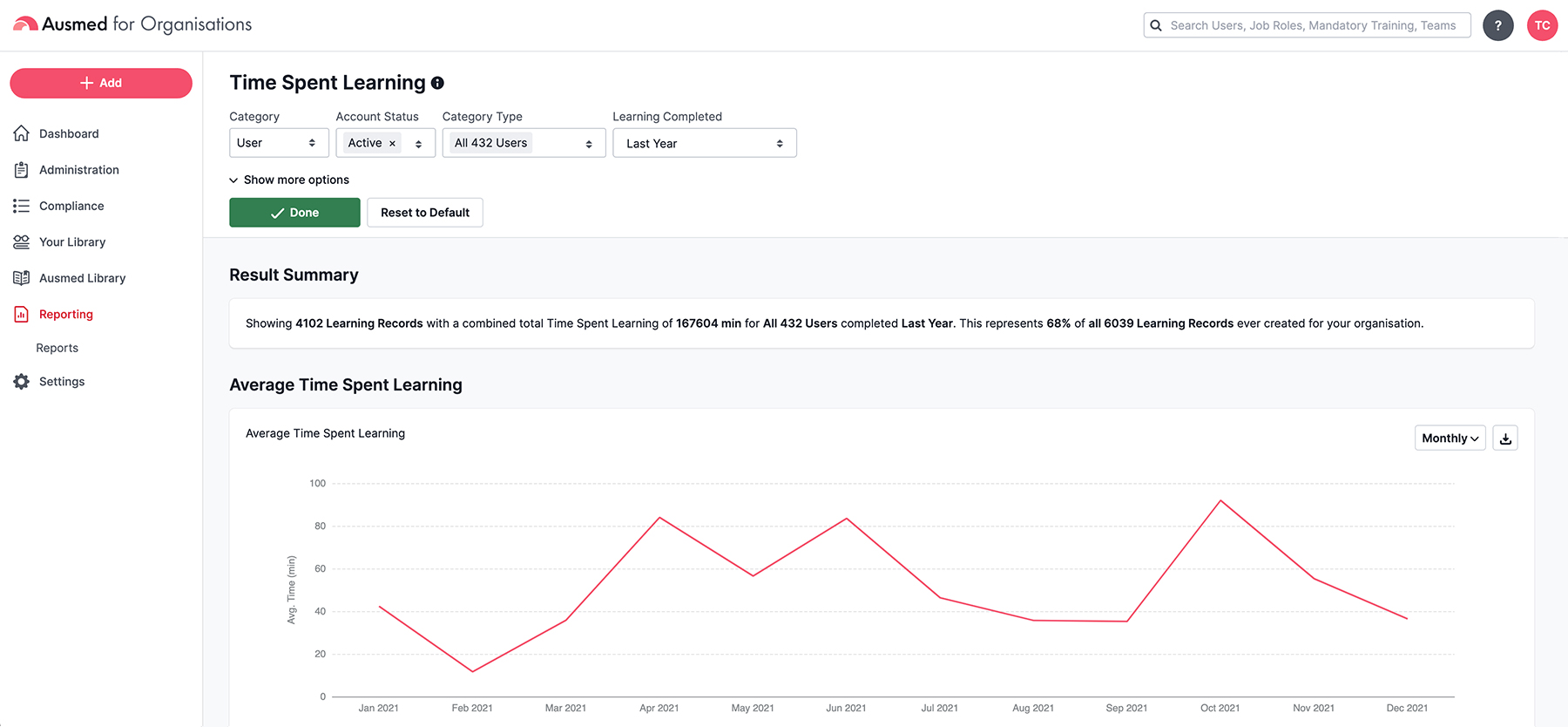Since organising or purchasing a learning management system, has this greatly improved your staff compliance and – more importantly – performance?
It’s understandable to assume that a brand new learning management system should solve your problems – why else do organisations spend so much on them? However, there is a lot of unused potential if they don’t have a solid learning and development plan in place to bolster the system itself as well as your staff’s goals.
We will help you create an airtight learning plan that caters to the mandatory training requirements of your organisation while also giving your staff the freedom they need to engage in self-directed learning.
What is effective professional development?
Directed, effective and engaging professional development increases an employee’s skills and knowledge, and ideally will achieve both personal and organisational goals.
Essentially, it’s your prerogative to give your staff the means to easily complete mandatory training and also to pursue their own educational interests. More learning and internal mobility opportunities for your staff increases a staff member’s time with an organisation by almost twofold (Nuys, 2021): LinkedIn Learning and Development discovered that the median time spent with a company that offers high internal mobility was 5.4 years, while the median time with a company offering low internal mobility was 2.9.
Why invest so much time into your learning and development plan?
Before you even put pen to paper, you need to understand why a learning and development plan is essential for the success of your organisation’s learning goals and your organisation more generally. By having an organised and intentional approach to learning at all levels of the organisation, you are limiting the degree to which your staff become bored, immobile and unskilled in comparison to their peers. You’re also keeping your organisation on the forefront of a burgeoning industry that is set to explode – professional learning and development is only going to grow in the face of COVID-19, remote working and the move to a digital standard for almost all industries. Over 58% of learning and development professionals (i.e. Directors of Education) now have a seat at the executive table in March 2021, whereas only 24% did in March 2020 (Nuys, 2021). This is a huge increase, and a sign of things to come.
So, now that you’ve identified your intentions, you can start to develop the concrete foundations of a good learning plan.
How to create a learning and development plan
Align the learning needs and outcomes with those of your organisation
This step is closely related to setting the intentions for your organisation’s learning plan, as it also hinges on identifying intangible assets. A quick way to do this is to make sure that the ideal results of the learning and development plan will have a positive effect upon the overall goals of the organisation. For example, if one of your organisation’s overall goals is to make healthcare more accessible for people who are located in rural communities, a portion of this year’s learning and development plan should be devoted to client diversity and the efficient use of telehealth technologies.
Create a feedback loop for your staff
Someone wise once said that actioning goals without a means for feedback is like hitting a golf ball into the dark: did you get it in the hole? Who knows.

One of the easiest ways to make sure you’re not hitting into the dark is to create a feedback loop. First, you need to know whose feedback is most relevant. In this case, it’s clear that you should be asking your staff simple questions regarding their usage of the learning management system, their goals for their own learning, any pain points present and any resources they’d like to see developed.
With those questions in mind, it would be easy enough to send out a quarterly survey and harvest (a small amount of) data from that. However, this removes agency from your staff regarding their own learning: if you want skilled staff, place an emphasis on self-directed learning. To do so, empower your staff to become agents of their own learning experience. Place a constant feedback box within easy reach of all pages on the learning management system, and watch the feedback – and thereby, the actionable data – flow in. You will have a better learning and development plan, and your staff will be empowered to control their own learning.
Lacking a feedback function? Ausmed’s removed the hassle, and enabled all staff to connect with their organisations via recommendations and feedback.
Decentralise competency assessments
Education directors have a broad scope of responsibility, and sometimes it can become overwhelming trying to coordinate many departments and various teams of healthcare workers and professionals. Well, one thing you can take off your plate is competency assessments. Instead of completing competency assessments for staff or teams that work on the floor, you should provide the tools to your organisation’s people managers in order to provide the most relevant learning directions for your staff.
This will make competency assessments more accurate and targeted. People who show competency in a certain skill won’t be disheartened by having to review the basics of that skill, and people who show a lack of competency in a certain skill won’t waste their time working on something else. As Donna Wright explains in her Ausmed lecture ‘Wright’s Competency Model in Practice', it’s incredibly easy for a poorly managed competency assessment to completely dismantle a positive culture of learning and development within an organisation (Wright, 2020). When staff are told to complete irrelevant learning resources, they’re being shown that the learning and development system is about hitting quotas. It can make staff feel like their organisation has little regard for their individual goals and skills.
Define performance metrics
To measure whether professional development is effective or not, you need to engage with (and learn to love) qualitative data. Organisational learning and development metrics are an increasingly difficult area, mainly because some numbers, such as ROIs or revenue increases, can be a red herring: only a small portion of success can be measured through that lens. The best way to engage with the efficacy of your organisation’s learning program is to ask your staff questions (again, and again, and again). You must have an open feedback loop that allows you and your staff to communicate freely and quickly about learning opportunities, resources and goals, such as Ausmed’s ‘Recommend this resource to your organisation manager’ function. To attain the most applicable and usable qualitative metrics, you need to:
- Gather feedback from your staff about learning resources
- Understand your staff’s satisfaction with your learning management system, learning plan and resources
- Gather feedback from customers regarding your staff’s skills and performance
There are also quantitative metrics that – if you’re using the correct learning management system and platform – are incredibly easy to acquire. These include hours spent completing online and virtual/in-person training each period, engagement survey scores, the number of resources completed, and many other metrics.

Finally, make continuous improvements
The beauty of the internet is that, contrary to popular belief, very little is set in stone. The current version of your learning and development plan may not be the last – or best – version that sees the light of day. In order to guarantee a consistently impressive and effective learning experience for your staff, you, as a leader of education within your organisation, need to remain open-minded about innovation and change. A great way to do this is to subscribe to the newsletters of reputable and boundary-pushing innovators within the healthcare sector.
Enter your email in the field provided below to subscribe to Ausmed’s Organisational Alerts - industry reports and insights from experts in the field.
References
- Nuys, A. V. 2021 ‘LinkedIn Learning Workplace Learning Report 2021',LinkedIn Learning, viewed 8 December 2021, https://learning.linkedin.com/content/dam/me/business/en-us/amp/learning-solutions/images/wlr21/pdf/LinkedIn-Learning_Workplace-Learning-Report-2021-EN-1.pdf
- Wright, D. 2020, 'Wright's Competency Model in Practice',Ausmed, viewed 13 December 2021, https://www.ausmed.com.au/cpd/lecture/wrights-competency-assessment-model.



